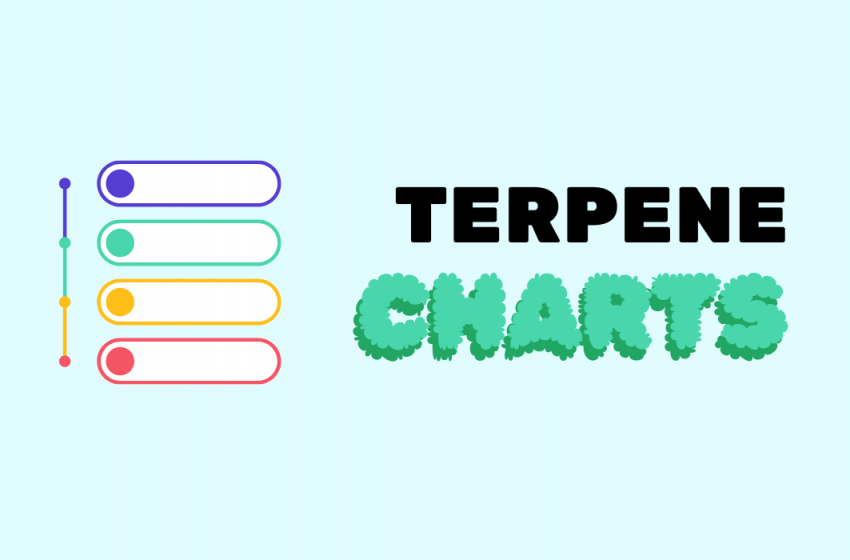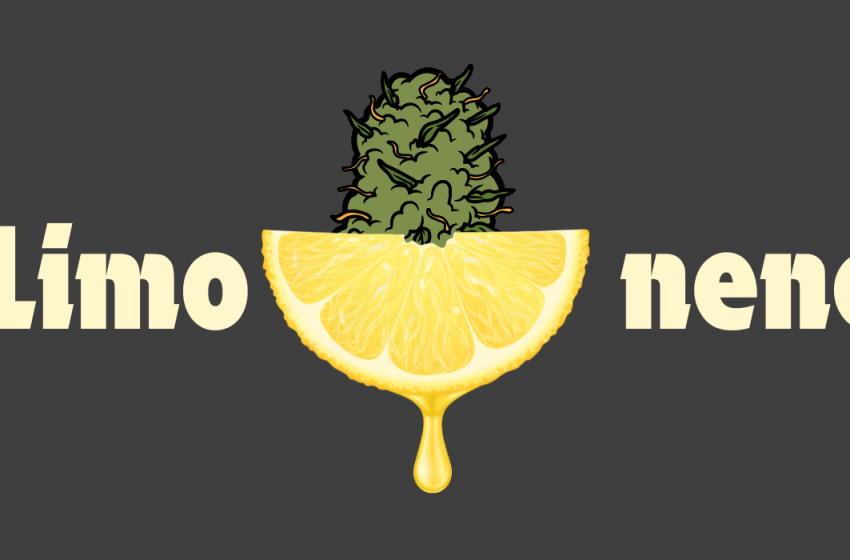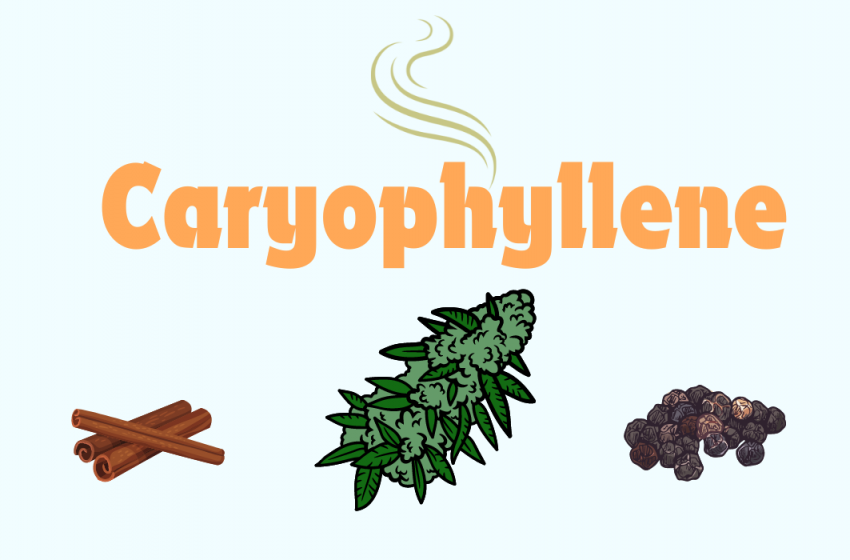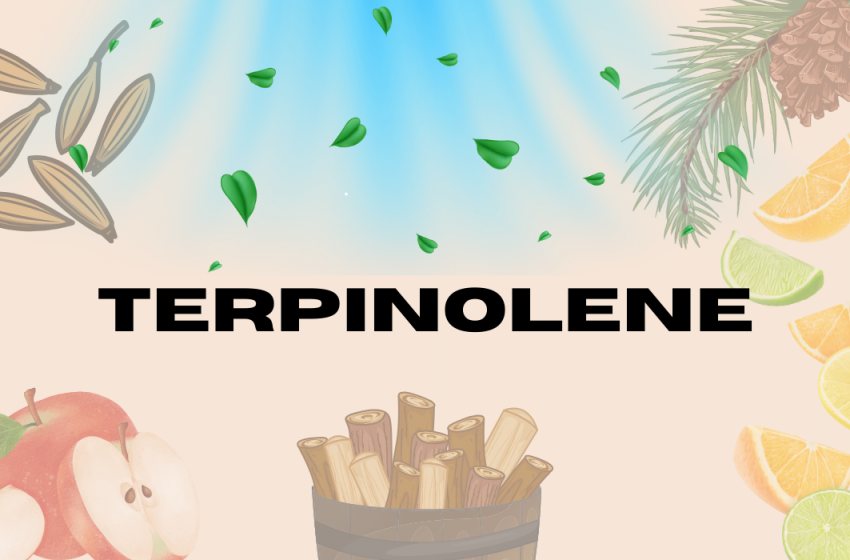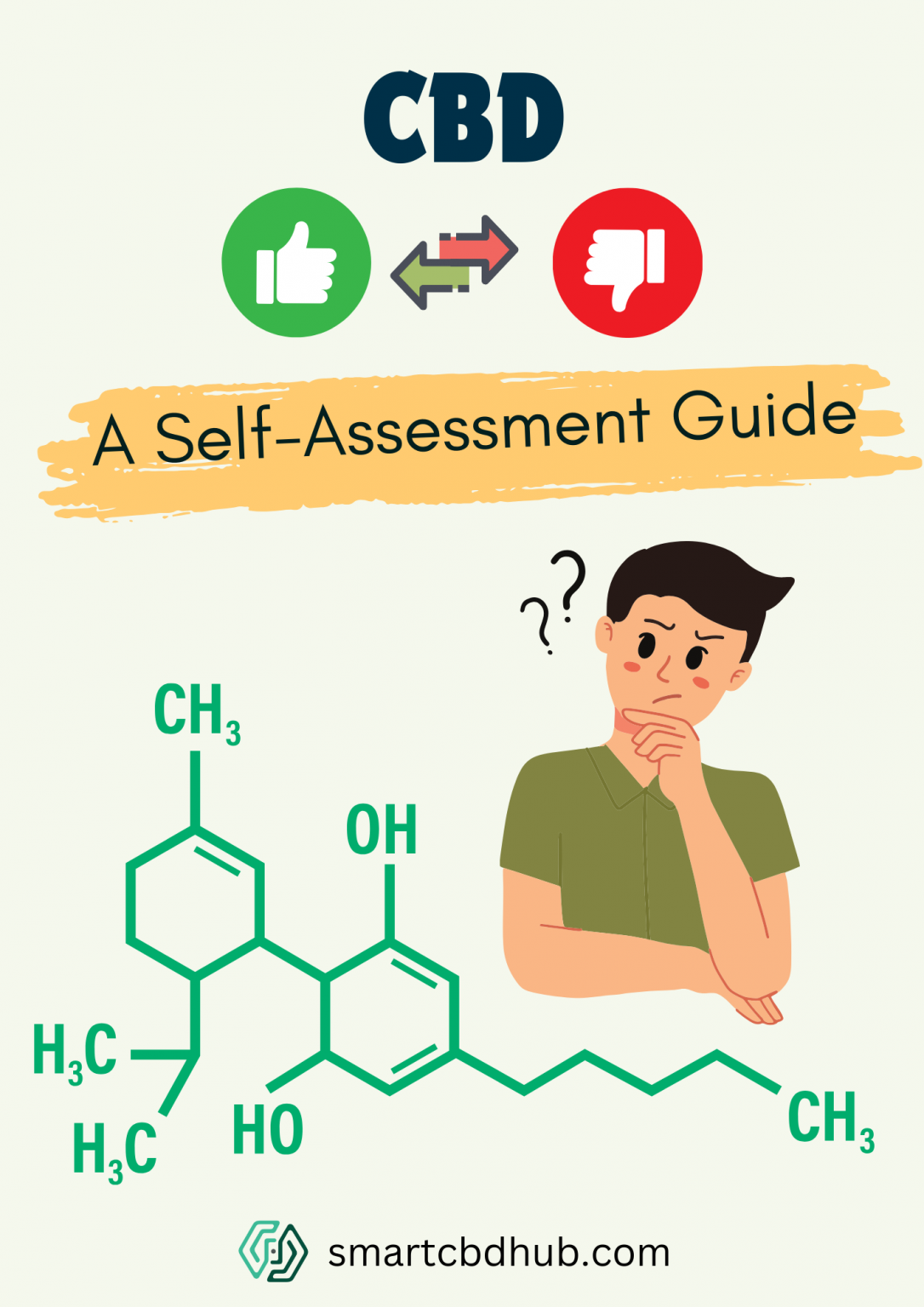Terpene Chart: Your Guide to Cannabis Aromas and Effects
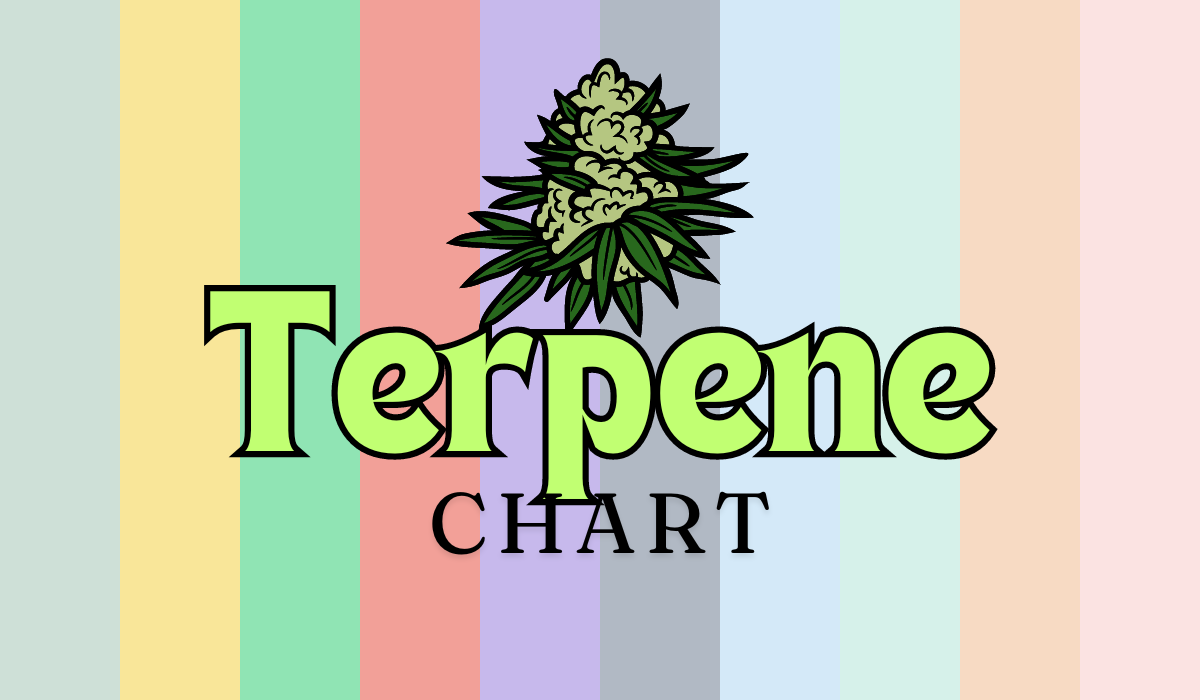
Have you ever wondered why different cannabis strains can make you feel so… well, different? The secret lies in tiny molecules called terpenes, and a terpene chart is your map to understanding them.
Terpenes are aromatic compounds found in many plants, including cannabis. They’re responsible for the distinct smells and flavors you experience, but that’s not all. These little powerhouses also play a crucial role in how cannabis affects your body and mind.
A terpene chart is a visual guide that breaks down the various terpenes found in cannabis strains. It’s like a cheat sheet for understanding what each strain might do for you. Whether you’re looking to relax, boost your mood, or find relief from certain symptoms, a terpene chart can help you make informed choices.
Understanding the Terpene Chart
A terpene chart isn’t just a pretty picture – it’s a wealth of information waiting to be tapped. Let’s break it down:
- Terpene names: You’ll see scientific names like Myrcene or Limonene.
- Aromas: Each terpene has a distinct smell, from earthy to citrusy.
- Effects: Charts often list the potential benefits or feelings associated with each terpene.
- Boiling points: This tells you at what temperature the terpene vaporizes.
- Chemical structure: Some charts include molecular diagrams for the science buffs.
Reading a terpene chart might seem daunting at first, but it’s simpler than you think. Start by focusing on the terpenes most prevalent in strains you enjoy. Look for patterns in the effects and aromas. Over time, you’ll start to see connections between the terpenes present and how you feel after using a particular strain.
Top 10 Terpenes in Cannabis
Let’s dive into the stars of the show – the top 10 terpenes you’ll find on most cannabis terpene charts.
Myrcene: The Relaxation Enhancer
Myrcene is the most common terpene in cannabis. It’s known for its earthy, musky aroma and its potential to enhance the couch-lock effect of some strains. If you’re looking to unwind after a long day, strains high in myrcene might be your go-to.
Flavor and Aroma:
- Flavor: Earthy, musky, clove-like, hints of fruit (mango, citrus)
- Aroma: Herbal, woody, spicy, balsamic
Health Effects:
- Anti-inflammatory
- Analgesic (pain relief)
- Sedative
- Antioxidant
- Antimutagenic
Limonene: The Mood Lifter
As its name suggests, limonene has a citrusy scent. It’s linked to elevated mood and stress relief. If you need a pick-me-up, look for strains with high limonene content on your terpene chart.
Flavor and Aroma:
- Flavor: Citrus, lemon, orange
- Aroma: Fresh, zesty, citrusy
Health Effects:
- Anti-inflammatory
- Mood enhancer
- Stress relief
- Antioxidant
- Antibacterial
Pinene: The Focus Booster
Pinene smells like – you guessed it – pine trees. It’s associated with improved alertness and memory retention. Some users report it helps counteract some of THC’s unwanted effects, like short-term memory issues.
Flavor and Aroma:
- Flavor: Pine, rosemary, basil
- Aroma: Fresh, piney, woody
Health Effects:
- Anti-inflammatory
- Bronchodilator (improves airflow)
- Memory aid
- Antibacterial
- Anti-anxiety
Caryophyllene: The Stress Reliever
With its spicy, peppery notes, caryophyllene is unique. It’s the only terpene known to interact with the body’s endocannabinoid system. It’s linked to reducing anxiety and easing pain.
Flavor and Aroma:
- Flavor: Spicy, peppery, clove-like
- Aroma: Warm, woody, spicy
Health Effects:
- Anti-inflammatory
- Analgesic (pain relief)
- Antioxidant
- Anti-anxiety
- Antimicrobial
Linalool: The Calming Agent
Linalool is responsible for the lavender-like scent in some strains. It’s known for its calming effects and potential to reduce anxiety. If you’re prone to cannabis-induced paranoia, linalool-rich strains might be worth a try.
Flavor and Aroma:
- Flavor: Floral, lavender, slightly spicy
- Aroma: Floral, sweet, lavender
Health Effects:
- Anti-anxiety
- Sedative
- Anti-inflammatory
- Analgesic (pain relief)
- Antimicrobial
Humulene: The Appetite Suppressant
Humulene has an earthy, woody aroma. Unlike THC, which often increases appetite, humulene might help suppress it. It’s also being studied for its potential anti-inflammatory properties.
Flavor and Aroma:
- Flavor: Earthy, woody, herbal
- Aroma: Woody, spicy, earthy
Health Effects:
- Anti-inflammatory
- Appetite suppressant
- Analgesic (pain relief)
- Antibacterial
- Antioxidant
Terpinolene: The Sedative Terpene
Terpinolene has a complex aroma, often described as floral with hints of pine and citrus. It’s known for its sedative effects, making it popular in evening-use strains.
Flavor and Aroma:
- Flavor: Herbaceous, floral, piney, citrusy
- Aroma: Fresh, herbal, floral, with hints of citrus and pine
Health Effects:
- Sedative
- Antioxidant
- Antimicrobial
- Anti-anxiety
- May have anticancer properties
Ocimene: The Decongestant
Ocimene has a sweet, herbal scent. While less common, it’s gaining attention for its potential decongestant and anti-inflammatory properties.
Flavor and Aroma:
- Flavor: Sweet, herbal, citrusy, tropical fruits
- Aroma: Sweet, floral, herbal, with hints of citrus and tropical fruits
Health Effects:
- Antioxidant
- Anti-inflammatory
- Antifungal
- Antiviral
- Decongestant
Bisabolol: The Skin Healer
Bisabolol has a light, floral scent. It’s known for its potential skin-healing properties and is being studied for its possible role in reducing skin inflammation.
Flavor and Aroma:
- Flavor: Floral, sweet, citrusy
- Aroma: Sweet, floral, with hints of chamomile and citrus
Health Effects:
- Anti-inflammatory
- Skin-soothing (used in cosmetics)
- Antioxidant
- Antimicrobial
- Anti-anxiety
Geraniol: The Protective Terpene
Geraniol has a rose-like scent. It’s being researched for its potential neuroprotective and antioxidant properties.
Flavor and Aroma:
- Flavor: Floral, rose-like, fruity
- Aroma: Floral, sweet, with hints of rose and citrus
Health Effects:
- Anti-inflammatory
- Antioxidant
- Neuroprotective
- Antimicrobial
- Anti-anxiety
Terpene Profiles in Popular Cannabis Strains
Understanding terpene profiles can help you predict a strain’s effects before you try it. Let’s look at some examples:
Indica-dominant Strains
- Granddaddy Purple: High in myrcene, caryophyllene, and pinene
- Northern Lights: Rich in myrcene, with notable levels of caryophyllene and limonene
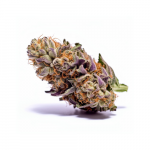
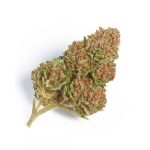
Sativa-dominant Strains
- Sour Diesel: High in caryophyllene and limonene
- Jack Herer: Notable levels of terpinolene and pinene
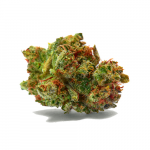
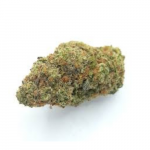
Hybrid Strains
- Blue Dream: Balanced mix of myrcene, pinene, and caryophyllene
- OG Kush: High in myrcene, with significant levels of limonene and caryophyllene
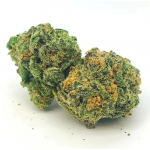
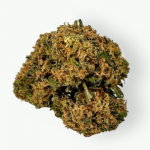
Remember, these profiles can vary based on growing conditions and phenotypes. Always check the specific batch’s terpene chart if available.
SmartCBDHub
The Entourage Effect and Terpenes
The entourage effect is a theory suggesting that cannabis compounds work better together than in isolation. It’s like a symphony – each instrument sounds nice alone, but together, they create something magical.
Terpenes play a crucial role in this effect. They can enhance or moderate the effects of cannabinoids like THC and CBD. For example, myrcene might increase the sedative effects of THC, while limonene could balance them out with mood-lifting properties.
This synergy between terpenes and cannabinoids is why many users prefer whole-plant cannabis products over isolated compounds. It’s also why terpene charts are so valuable – they give you a peek into the potential ensemble effects of a strain.
Using Terpene Charts for Medical Purposes
For medical cannabis users, terpene charts are more than just interesting – they’re tools for tailoring treatment. Here’s how:
- Targeting specific conditions: Certain terpenes are linked to specific therapeutic effects. For example, linalool and caryophyllene might be beneficial for anxiety.
- Customizing therapy: By understanding terpene profiles, patients can fine-tune their cannabis regimen for optimal relief.
- Minimizing side effects: Knowledge of terpenes can help patients avoid strains that might exacerbate certain symptoms.
Always consult with a healthcare professional before using cannabis for medical purposes. They can help you interpret terpene charts in the context of your specific health needs.
Terpene Charts and Cannabis Product Selection
Terpene charts aren’t just for dried flower – they’re useful for all cannabis products. Here’s how to use them:
- Choosing concentrates: Look for full-spectrum extracts that preserve the strain’s original terpene profile.
- Vape cartridges: Some brands provide terpene breakdowns. Opt for those that align with your desired effects.
- Edibles and topicals: While terpenes are often lost in processing, some brands are now adding them back in. Check the labels!
Remember, a product’s effects aren’t solely determined by its THC or CBD content. The terpene profile plays a big role, so make it part of your selection process.
Creating Your Own Terpene Chart
Feeling inspired? You can create your own terpene chart! Here’s how:
- Get a notebook or spreadsheet.
- List the strains you try.
- Note the dominant terpenes (often listed on the packaging).
- Record the effects you experience.
- Over time, look for patterns between terpenes and effects.
This personal terpene chart can be a powerful tool for optimizing your cannabis experience.
The Future of Terpene Research
The world of terpene research is booming. Scientists are uncovering new potential benefits all the time. Some exciting areas of study include:
- Terpenes as standalone treatments
- More precise terpene-cannabinoid combinations for specific conditions
- Advanced extraction methods to preserve delicate terpene profiles
As research progresses, expect to see more detailed and user-friendly terpene charts. The future of cannabis is aromatic indeed!
FAQs
Myrcene is typically the most abundant terpene found in cannabis strains. It’s known for its relaxing effects and earthy aroma.
Terpenes themselves don’t produce a “high” like THC does. However, they can influence the overall effects of cannabis, potentially enhancing or modulating the high.
Not at all! Terpenes are found in many plants. For example, limonene is abundant in citrus fruits, and pinene is found in pine trees.
Terpenes are largely responsible for the flavor profile of cannabis. Different combinations of terpenes create the unique tastes associated with various strains.
Absolutely! CBD products, especially full-spectrum ones, contain terpenes. A terpene chart can help you choose CBD products with specific desired effects.
While terpenes are generally considered safe, some people may be sensitive to certain ones. Always start with a small amount when trying a new strain or product.





